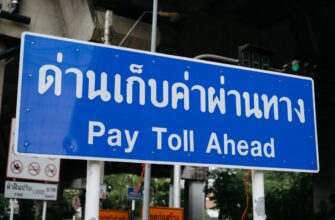- Understanding USDT and Its Impact on Philippine Banking
- What is USDT and Why Filipinos Use It
- How Philippine Banks Facilitate USDT Transactions
- Key Factors Affecting USDT Prices in the Philippines
- How to Check Real-Time USDT Prices via Banks
- Risks and Regulations for Bank-Linked USDT Use
- The Future of USDT in Philippine Banking
- Frequently Asked Questions (FAQs)
Understanding USDT and Its Impact on Philippine Banking
The demand for Tether (USDT), a stablecoin pegged to the US dollar, is surging in the Philippines. As Filipinos increasingly use USDT for remittances, investments, and online transactions, local banks are navigating how to accommodate this digital asset. This article explores how Philippine banks interact with USDT pricing, transaction processes, and the evolving regulatory landscape.
What is USDT and Why Filipinos Use It
USDT (Tether) is a cryptocurrency designed to maintain a 1:1 value with the US dollar. Its stability makes it ideal for:
- Low-cost remittances: Bypassing high traditional transfer fees
- Dollar access: Hedging against peso volatility
- Crypto trading: Serving as a base currency on exchanges
- Online payments: Facilitating cross-border e-commerce
Philippine banks don’t directly set USDT prices but enable conversions through partner exchanges and authorized channels.
How Philippine Banks Facilitate USDT Transactions
While banks don’t trade USDT directly, they support transactions via:
- Bank transfers to exchanges: Funding accounts on platforms like Binance or PDAX
- Over-the-counter (OTC) desks: Partner services for large conversions
- Regulated payment gateways: Integrating crypto-to-fiat solutions
Banks monitor these flows under Bangko Sentral ng Pilipinas (BSP) guidelines, requiring strict KYC verification to combat money laundering.
Key Factors Affecting USDT Prices in the Philippines
USDT’s PHP value fluctuates based on:
- USD/PHP exchange rates: Central bank policies and economic indicators
- Platform fees: Varying charges across exchanges and brokers
- Market liquidity: Supply/demand imbalances during peak hours
- Regulatory shifts: BSP announcements impacting crypto accessibility
Prices typically range between ₱56-₱58 per USDT but can spike during peso depreciation.
How to Check Real-Time USDT Prices via Banks
Follow these steps for accurate pricing:
- Use BSP-registered exchanges (e.g., Coins.ph, PDAX)
- Link your bank account for instant PHP transfers
- Compare buy/sell rates across 3+ platforms
- Account for withdrawal fees (usually 0.1-2%)
Banks like BDO and UnionBank provide seamless fund transfers to compliant crypto platforms.
Risks and Regulations for Bank-Linked USDT Use
Critical considerations include:
- BSP licensing requirements: Only use exchanges with VASP registration
- Transaction limits: Daily caps apply (e.g., ₱500,000 for verified accounts)
- Security threats: Phishing scams targeting bank-crypto transfers
- Tax implications: Capital gains tax on USDT profits
Always verify exchange legitimacy via BSP’s official registry.
The Future of USDT in Philippine Banking
BSP’s progressive stance suggests:
- Enhanced bank-exchange integrations for real-time settlements
- Pilot programs for blockchain-based remittances
- Tighter AML protocols for large transactions
- Potential peso-backed stablecoins by major banks
This evolution aims to balance innovation with financial stability.
Frequently Asked Questions (FAQs)
Q: Do Philippine banks sell USDT directly?
A: No. Banks facilitate peso transfers to licensed exchanges where USDT is traded.
Q: Why does USDT price vary between platforms?
A: Differences in liquidity, operational costs, and trading volumes cause price disparities.
Q: Is USDT legal for bank transactions in the Philippines?
A: Yes, through BSP-registered Virtual Asset Service Providers (VASPs).
Q: What’s the safest way to convert USDT to pesos via banks?
A: Use BSP-approved exchanges, enable two-factor authentication, and transfer funds directly to your bank account.
Q: Are bank transfers for USDT taxable?
A: Profits from USDT trading are subject to capital gains tax. Consult a tax professional for specifics.








